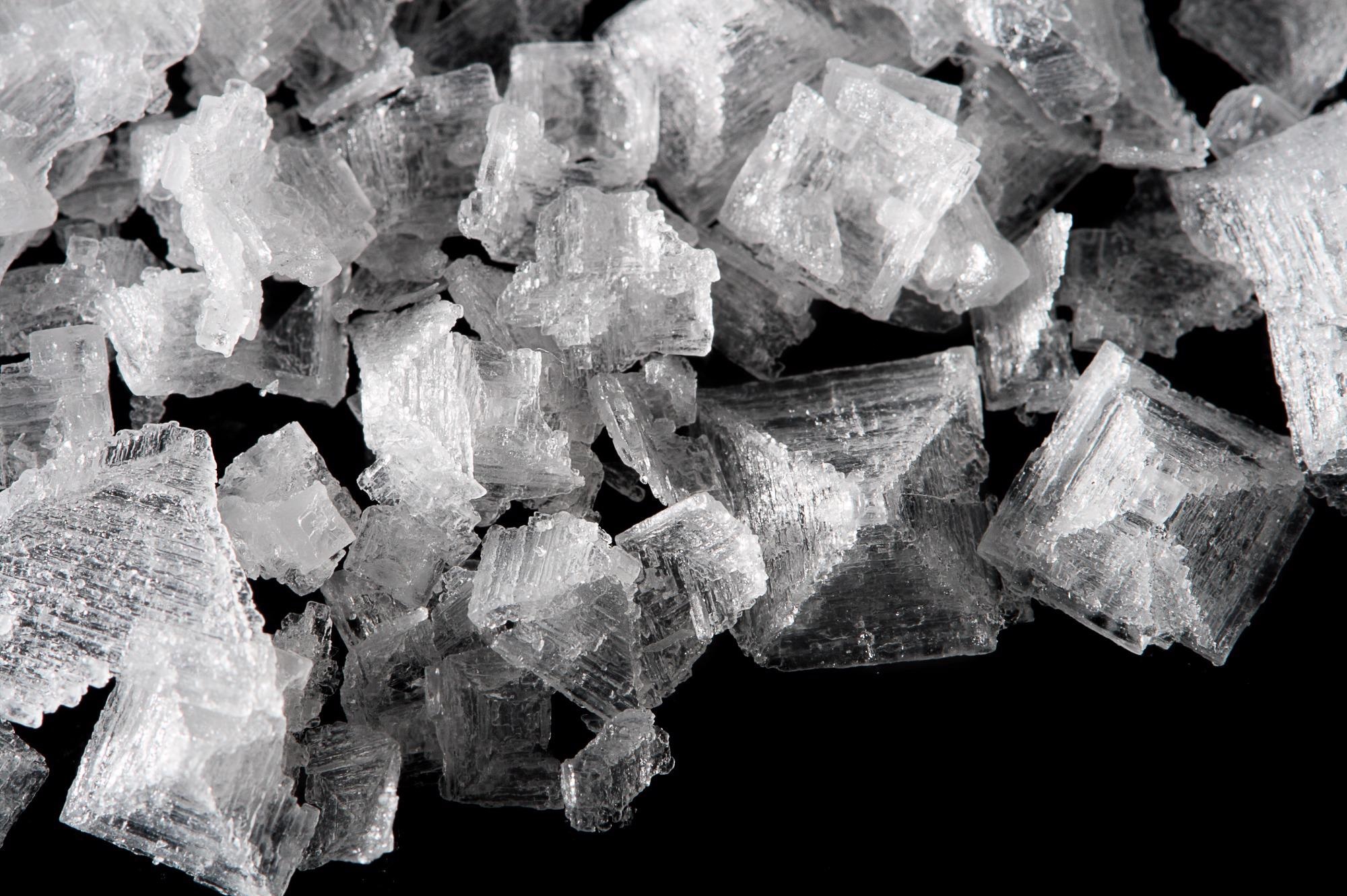AZoNano speaks with Professor Hyoungsoo Kim from Korea Advanced Institute of Science and Technology about his efforts to create a novel nanoscale self-assembling salt-crystal origami method called crystal capillary origami.
What inspired your research into the process that you are calling ‘Crystal Capillary Origami’?
In a multiphase system, if the length scale gets smaller, a capillary force is pre-dominant at the liquid-liquid interface. People used the capillary origami effect to assemble solid materials at the interface.
Under this background, we accidentally observed that some salts could cover the liquid-gas interface while the liquid evaporates. Based on this, we began to study how the salt crystals grow at the water-in-oil emulsion. We believed that some specific salts could grow and cover the emulsion interface.
Among many different crystal shapes, a smooth spherical capsule was found. Capsules, which have been widely used for the delivery of chemical agents and drugs, usually were made by spray coating and polymerization for a shell layer. We thought that this could enable us to fabricate the capsules without any post coating or chemical process, without the need for special chemicals (i.e., surfactants, catalysts), facilities and experts.
Our finding seems to be simpler compared to conventional capsule fabrication.
According to your research, the self-assembling mechanism of elasto-capillaries opens new applications in micro and nanotechnology by providing 3D assembly structures with 2D planar unit cells. Please can you give a general overview of how this process works?
To date, it is well-known that crystallites tend to grow and aggregate with a unique crystal lattice, the 3D structure, under free stress without any control when they form a crystal. However, we demonstrated a smooth spherical capsule using elasto-capillarity to planar unit cells.
The crystal capillary origami exhibits a novel active capillary origami method taking advantage of the preferred deformation and accretion of the growing nanostructures along the liquid interface without any predetermined shape and size of patches.
Elasto-capillarity is arguably a less known phenomenon than the well-known process of capillary action. Can you give an insight into this process and how it varies from capillary action?
Elasto-capillarity represents the ability of capillary force to deform an elastic material. We showed that capillary force could effectively deform nano-scaled planar crystal chunks.
Unlike conventional capillary origami, there is no need to fabricate the sheet beforehand because the sheet element (i.e., planar crystal) grows. It enables the capsules to form by spontaneous self-assembly through the simple diffusion process. Namely, the current method could fabricate a three-dimensional curved surface while capturing target materials from the external environment.
How are 3D structures – or capillary origami – created?
Our method utilizes the handshaking-made emulsion template consisting of the salt-saturated aqueous solution and the oil.
As time passes, crystallization of the salt starts at the interface due to the diffusion of water into the oil. Since the crystallites are plate-like, they can be deformed at the liquid-liquid interface (here, water-in-oil emulsions) by Laplace pressure, and the crystallites cover the emulsion surface. Finally, the liquid emulsion is changed to the shell structure at the interface with a smooth surface through crystal capillary origami.

Image Credit: elena moiseeva/ Shutterstock.com
One problem associated with traditional capillary origami is that they cannot be completely spherical and will always have discontinuous boundaries. How has your method overcome this challenge to produce a fully spherical capillary origami structure?
In order to make smooth capsules, we considered the crystal growth with simultaneous bending deformation. We think that monoclinic plate-like crystallite is a potential candidate for encapsulating materials since the planar sheet is easier to bend.
It turns out that the bending of crystallites is preferred since the surface energy gain is larger than the stored elastic energy of the crystallite. Also, we found that the initial emulsion size was important for capsule formation. Although the salt is monoclinic, the crystal coverage along the interface differs depending on the emulsion size (to be specific, the emulsion of O(10 μm) is appropriate as the template for capsules).
Aside from table salt, or sodium chloride, that has a cubical crystal structure, what other salt crystals did you utilize to establish capillary origami action, and what did you discover when using salts with a plate-like structure?
When we used NaCl with a cubic crystal structure, we could not find any spherical capsules long after emulsification. Aside from NaCl, we also tested many different types of salts to determine whether they could form spherical capsules.
As per the experiment results, monoclinic salts are required to materialize 3D spherical shell structure. We used calcium propionate, one of the commonly used monoclinic salts, as a food additive to help preserve various food products.
What methods did you use to analyze the mechanism of the self-assembling shapes?
We observed crystal accretion at different emulsion sizes through bright-field microscopy. But, the real-time imaging is restricted at the observation of crystal accretion due to the resolution of the optical objective lens that we used.
So, the final crystal shapes with both microscale and nanoscale were investigated with scanning electron microscopy. In order to characterize the individual crystallite, such as crystallite size and Miller indices, X-ray diffraction analysis was performed. In addition, to explain shell geometry, we develop a theoretical model based on a thin-walled pressure vessel, which delineates the experimental observations of crystal capillary origami.
Did you come across any challenges during your research, and if so, how did you resolve them?
We first wanted to see the cross-section of the capsule or to somehow measure the thickness directly. To do that, we conducted various ways to measure or see the thin wall of the shell using TEM, cryo-TEM, FIB, etc.
Unfortunately, we realized that we could not measure or see the cross-sectional shape of the capsule within our expertise since all the samples except for the SEM measurement were totally destroyed during the measurement. Based on the deformation of the shell structure at the SEM measurement, we concluded that the final structure is a spherical capsule.
Although we believe that SEM is the safest and most reliable measurement technique to understand the shell geometry, we are still seeking how to view the cross-section. These days, we are trying a new method to apply intense local pressure on the capsule surface using the accurately-controlled microscale needle to see the cross-section.
These self-assembling nanostructures can be used for a range of encapsulation applications in various industries. Can you provide some examples of such applications?
We expect that this kind of salts can be used as a biocompatible and edible capsule component. Crystal capillary origami could impact a diverse array of areas for encapsulation, including food industries, drug delivery and nutraceuticals because it is chemical-free and self-dissolving in water.
We think that the practicality of this method could be strengthened if the method takes advantage of microfluidics technologies. This is because we believe that we can achieve high throughput and monodisperse salt-crystal-encapsulated droplets.
What are the next steps for your research, and where do you see this going in the future?
We are currently trying to experimentally obtain the thickness information of the shell structure, which has not yet been revealed. Afterward, we will expand the crystal capillary origami for different cases, including other various chemicals as well as salts. In addition, we also aim to investigate crystal capillary origami in various emulsion types other than W/O emulsion.
Where can our readers find out more?
For the basic knowledge for elasto-capillarity, we recommend reading the related review paper, Roman and Bico, Phys.: Condens. Matter (2010). For the detailed capsule fabrication and its principle using crystal capillary origami, you can see the following article: Park and Kim, Nanoscale (2021).
About Professor Hyoungsoo Kim
 Hyoungsoo Kim is currently an associate professor in the Department of Mechanical Engineering at KAIST. He serves as an Editorial Advisory Board member of Experiments in Fluids. He has a speciality in direct optical measurement techniques, for instance 2D/3D Particle Image Velocimetry, interferometric analysis, Schlieren method and high-speed and fluorescent imaging. Based on the direct optical measurement techniques, he explores fundamental fluid dynamics problems, for instance, hydrodynamic instabilities inspired by industry and nature, elastocapillary, interfacial phenomena, complex fluids, elastohydrodynamics motivated by human diseases, aerosols atomization and transportation, liquid and particulates transportation in a porous media.
Hyoungsoo Kim is currently an associate professor in the Department of Mechanical Engineering at KAIST. He serves as an Editorial Advisory Board member of Experiments in Fluids. He has a speciality in direct optical measurement techniques, for instance 2D/3D Particle Image Velocimetry, interferometric analysis, Schlieren method and high-speed and fluorescent imaging. Based on the direct optical measurement techniques, he explores fundamental fluid dynamics problems, for instance, hydrodynamic instabilities inspired by industry and nature, elastocapillary, interfacial phenomena, complex fluids, elastohydrodynamics motivated by human diseases, aerosols atomization and transportation, liquid and particulates transportation in a porous media.
Disclaimer: The views expressed here are those of the interviewee and do not necessarily represent the views of AZoM.com Limited (T/A) AZoNetwork, the owner and operator of this website. This disclaimer forms part of the Terms and Conditions of use of this website.